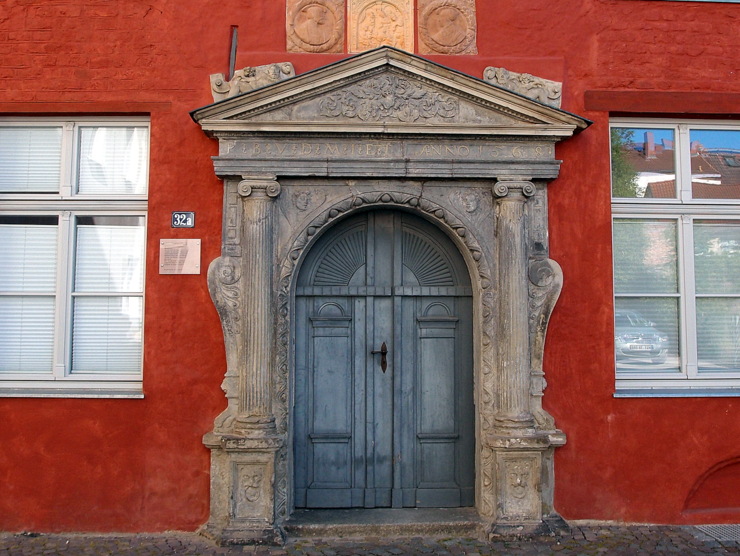
This Renaissance portal, dating back to 1568, can be found at Jacobiturmstraße 32 in the German city of Stralsund. The three terracotta panels are considered to have been created by sculptor Statius von Düren.
You only see what you know (Goethe)

This Renaissance portal, dating back to 1568, can be found at Jacobiturmstraße 32 in the German city of Stralsund. The three terracotta panels are considered to have been created by sculptor Statius von Düren.
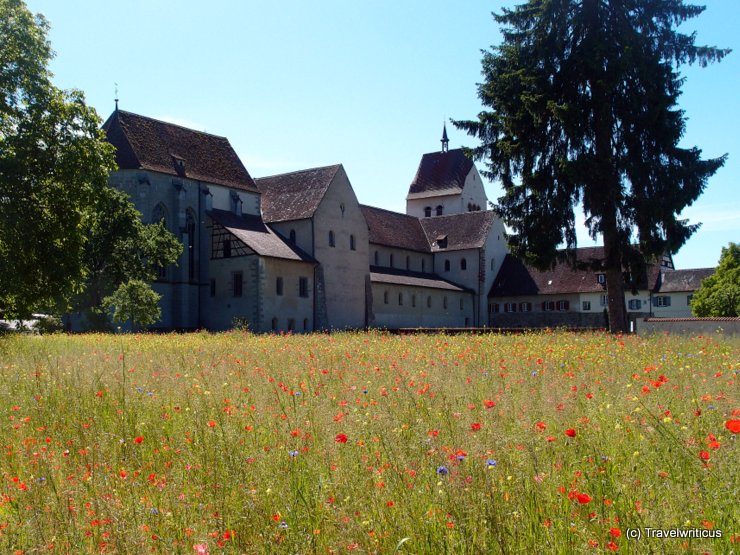
Reichenau Abbey was founded in 724 by Saint Pirmin. Later the abbey became famous for the Reichenauer Malschule. This term comprises lavishly illuminated manuscripts created during the late 10th and early 11th centuries.
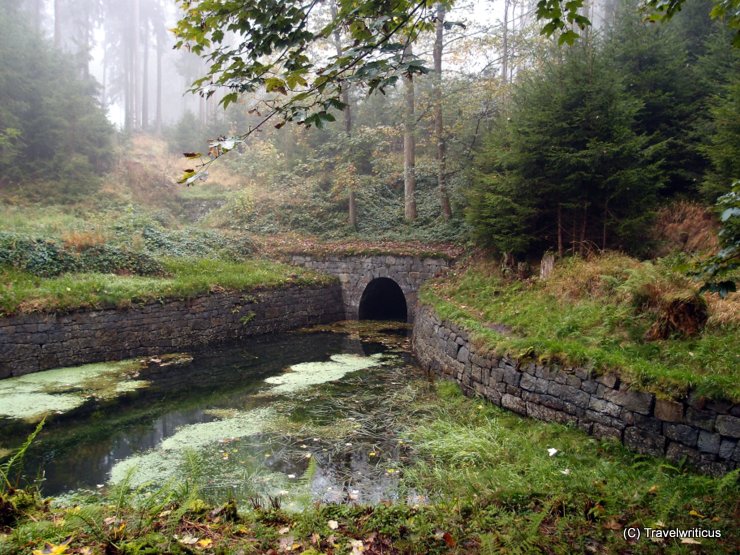
The Upper Harz Water Regale (Oberharzer Wasserregal) is a system of dams, reservoirs and ditches built from the 16th to 19th centuries to divert and store the water that drove the water wheels of the mines in the Upper Harz region. [German]
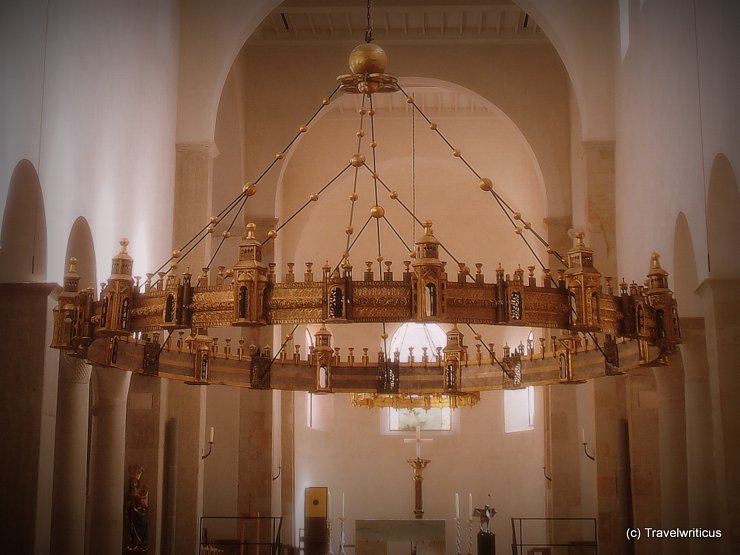
The Hezilo Chandelier in the Hildesheim Cathedral is a medieval circle-candlestick which measures stunning 6 metres in diameter. Its name origins from Bishop Hezilo of Hildesheim, who commissioned the chandelier in the 11th century.
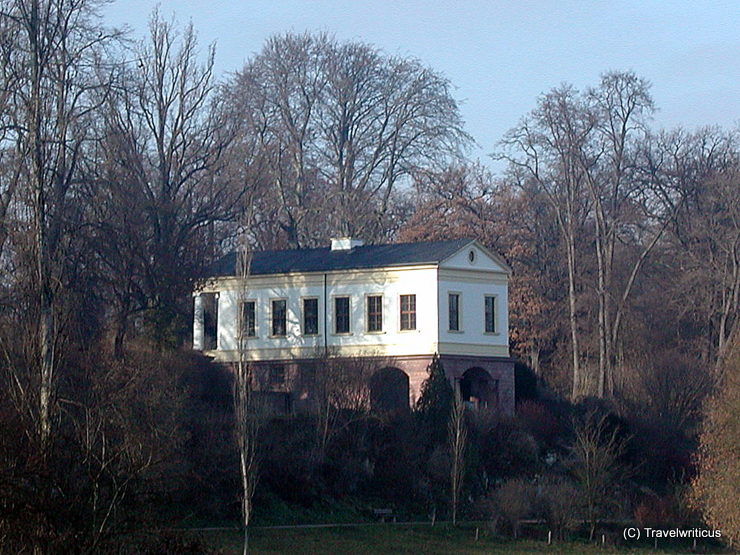
The Roman House in Weimar stands high above the Ilmpark and offers a beautiful view of the countryside from its windows. Grand Duke Karl August once enjoyed this view. Today, a museum inside tells about the history of the park. [German]

It was a cold day when I took this photo of a frozen fountain on the grounds of the Würzburg Residence (Würzburger Residenz). The Baroque palace saw its completion in 1744. Today, it is part of the UNESCO World Heritage List.
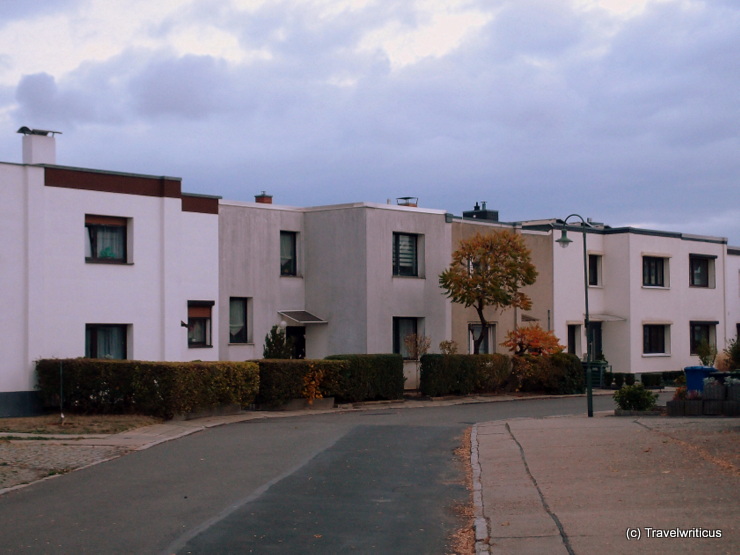
I saw the visit to the Törten Housing Estate with great expectations. The previously visited Bauhaus Building and the Master’s Houses were examples of an upscale architectural style. But what style did the Bauhaus movement use for simple family homes? In the streets of Törten, I found the answer. [German]

Two UNESCO World Heritage Sites are to be found in the urban area of Dessau-Roßlau. The photo shows the Roman ruins of the Garden Kingdom of Dessau-Wörlitz. They are generally known as the “Seven Pillars“. Between the pillars shimmers the reconstruction of a Trinkhalle. It was designed by Ludwig Mies van der Rohe. [German]
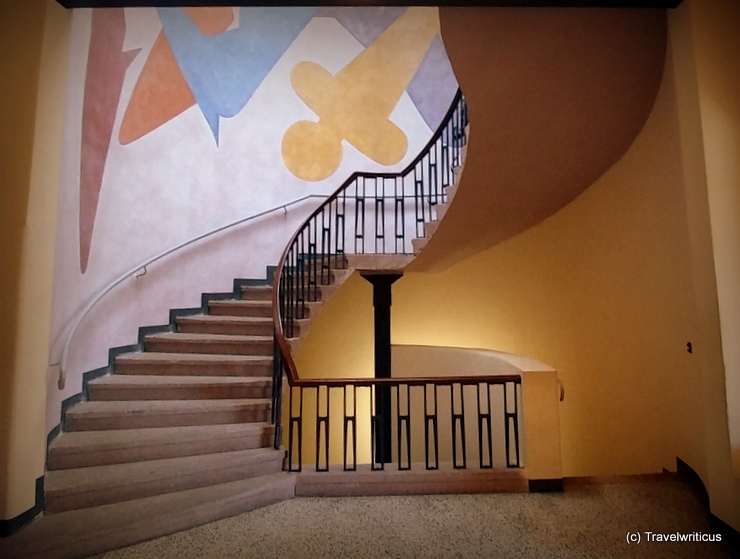
When Oskar Schlemmer was appointed to the Bauhaus in Weimar, he took over the management of the mural painting workshop, among other functions. Some of his works can be seen as reconstructions in the Van de Velde building. In the period from 1919 to 1925, this building was used as a workshop building of the State Bauhaus Weimar. [German]
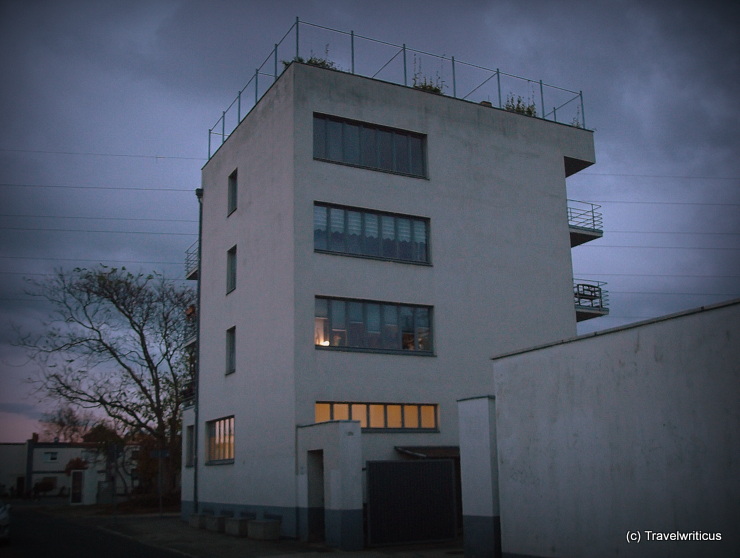
The day was already dawning when I reached the Konsum building. It was built in 1928 to plans by Walter Gropius. Its unusual height and function as a department store made it a focal point of the Törten Housing Estate. [German]
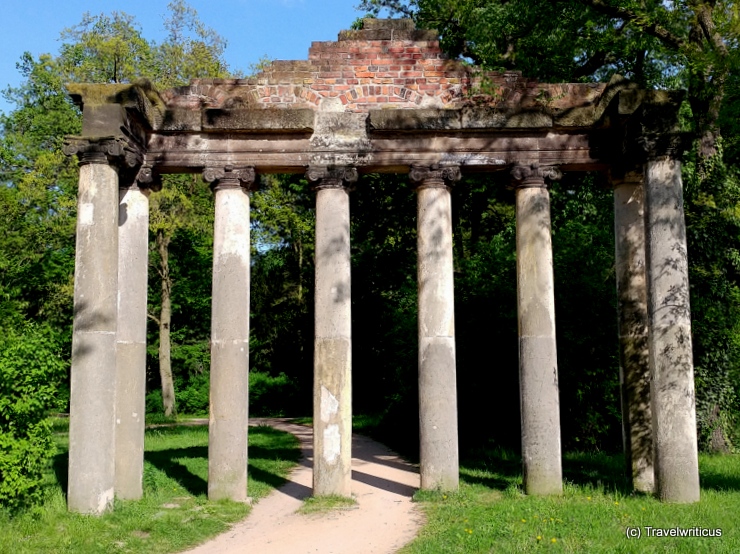
The “Seven Pillars” (Sieben Säulen) represent an artificial Roman ruin in Georgium. Thus, an English-style landscape park in Dessau-Roßlau is called. Together with the Wörlitzer Park, this forms the UNESCO World Heritage Site “Garden Kingdom of Dessau-Wörlitz”. The name of the building raises a question: why does it have eight pillars? [German]
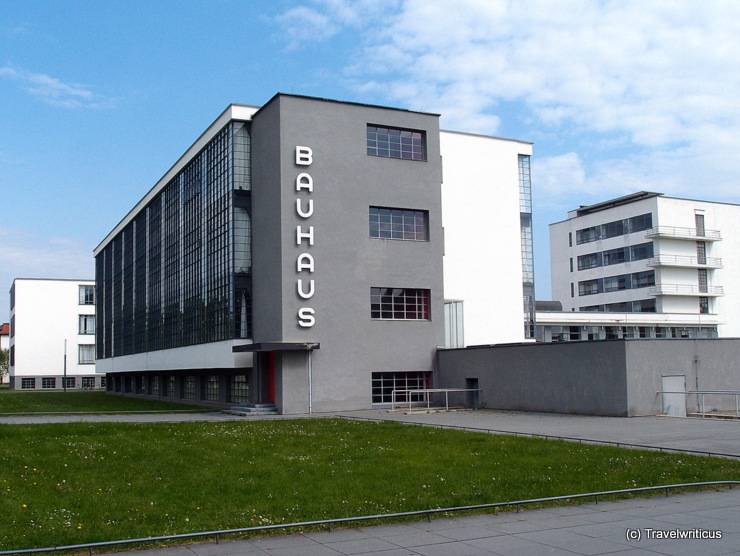
The Bauhaus building Dessau was built in 1925 – 1926 to plans by Walter Gropius. It served as a school building for the Bauhaus art, design and architecture school. Since 1996 it has been a UNESCO World Heritage Site. [German]